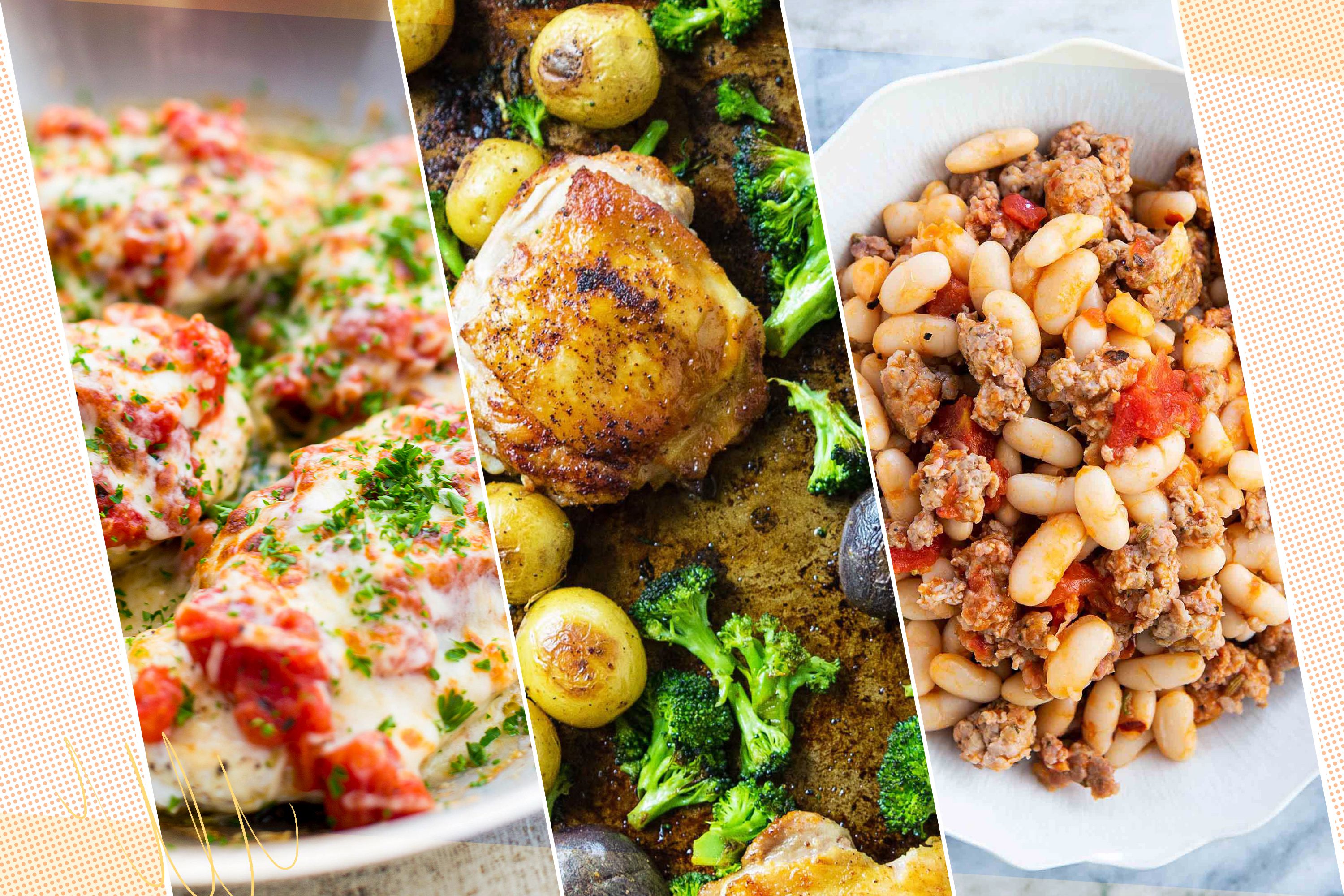
Healthy cooking isn’t a trend. So you can reduce the sodium and fat content of your food, learn how to make broths and stocks. Local ingredients are best. Also, ensure you get an internal temperature reading on your food. It will be a wise decision. Here are some more tips to get you started. You'll be surprised at just how easy it is to make healthier meals at home.
Healthy cooking doesn't have to be a fad
Healthy cooking is a wonderful way to improve your health, and to enhance the quality of your daily life. Healthy cooking isn’t a fad. PepsiCo isn't following a fashion. They are actively making healthier food choices, and expanding their retail distribution.
You have complete control over how much sodium and fat you put into your meals by making your own broths or stocks
It can be delicious and healthy to make your own broths or stocks. Bones add a deep, earthy flavor to the finished product and can be roasted to caramelize the meat. The cartilage and gelatin from the veal bones add collagen and gelatin to the final stock. Vegetarians can substitute stock for vegetable stock in several recipes. Bone broth can be frozen to make it more versatile.
Vegetable stock, one of the most versatile cooking fluids, is one. Vegetable stock can be made from vegetables, potatoes, or onions. This is a great choice for thick stews and gravies, sauces, as well as Swedish meatballs. Turkey stock, however, is made from vegetables and spices. It's also a great way to use up leftover pot pie. Don't worry if you don’t like chicken stock or beef. There are plenty options for chicken stock and turkey stock.

The best way to determine when the food is done is by measuring its internal temperature.
A food thermometer is a valuable tool when you are cooking poultry or meat. Although the surface of the meat or poultry may look cooked, the inside isn't always done. Your meat might not be completely cooked. You may notice the juices running clear on the surface. Although tempting to do this, it's not a reliable indicator of cookedness.
Safe bacteria and fungal infections can be killed by cooking food to the right temperature. Food poisoning can result if it's not properly cooked. The internal temperature of food should not be too hot to allow steam to escape. This is a good rule of thumb. This can be checked by inserting a thin knife in the middle of the meat/poultry.
Using local ingredients
Locally sourced ingredients are a great way to increase your restaurant's customer base. While there's a risk of overcharging customers for local ingredients, using seasonal ingredients is a surefire way to keep costs down. To find recipes that are based on local ingredients, you can use the USDA's Mixing Bowl. You can make seasonal menus using seasonal ingredients, without the need to buy seasonal items.
Locally-sourced ingredients offer many benefits, including the freshness and quality of the food. When you buy produce and meat from local farmers, you can be confident that it's fresher and more flavorful than its farmed counterparts. It's possible to support your local economy by working directly alongside local farmers instead of relying on large corporations. You can reduce your carbon footprint by choosing locally-sourced produce.

FAQ
Which method is best to learn how to cook?
Cooking is a skill that every person should learn. If you don't know how to cook, you miss out on some great food experiences. To learn how to cook, you must first find a recipe you like and then follow it carefully. Next, practice making small changes until you are comfortable cooking the dish. Finally, try cooking for others. This will allow you to improve your cooking skills and test your abilities.
What can I learn about cooking?
All over the country, cooking classes are offered. Many schools offer courses in baking, pastry, and wine tasting. A local community college, vocational school, or private institution can offer classes in cooking.
Are there any ingredients that I must buy in order to make a meal?
There is no need to purchase all the ingredients. Many grocery stores carry pre-made sauces and items that can be used as substitutes. Pre-made meals are a great way to save money.
How can I get hired to be a chef?
First, you need to earn a culinary arts diploma in order to get a job working as a chef. Next, you should join a professional association such as the American Culinary Federation (ACF). This organization provides certification exams and offers networking opportunities.
What's the best way to keep leftovers safe?
Leftovers are usually stored in Tupperware containers. These containers are great for keeping food fresh and preventing odors from growing. They also keep foods warm longer. Frozen leftovers can be kept in freezer bags. When freezing food, place the bag inside another freezer bag so that air doesn't escape. Once the food is frozen place it in an airtight container, such as a zip lock bag.
How do you choose the right career path to become a chef? How do I get started as a chef?
As an apprentice, you can start your journey to becoming a chef. Apprenticeships allow you to work for several years without paying any tuition fees. After your apprenticeship is completed, you can apply to be a sous chef. Sous chefs work with cooks to prepare dishes and supervise them. They oversee all aspects of the restaurant's operation.
Statistics
- You'll be amazed that over 90% of CIA students receive scholarships and grants to finish their culinary studies. (ischoolconnect.com)
- under 10 Kids have been taught that there is special food just for them, and Fiese says that 10 percent of kids will throw a tantrum if they don't get the food they want. (washingtonpost.com)
- The median pay for a chef or head cook is $53,380 per year or $25.66/hour, according to the U.S. Bureau of Labor Statistics (BLS). (learnhowtobecome.org)
External Links
How To
How to make a perfect eggroll
Omelets have always been a favourite food to eat for breakfast. How do you make them perfect? I've tried many recipes and different methods but none have worked. So today, I want to share some tips and tricks with you so you can make your own delicious and fluffy omelets every morning.
It is important to know that eggs can be temperamental when making omelets. It is important that eggs are fresh from an organic market and kept cool until used. The yolks and whites will not form properly if they aren't kept cold enough. This will make your omelets appear strangely colored. If you intend to cook your eggs immediately, it's best to use room-temperature egg.
You might also try separating the egg before adding to the pan. It is important not to allow any white to mix with the yolk as this could lead to the omelet becoming curdled.
The bottom part of an egg that is added directly to the stovetop might be burned, which could cause a ruined texture in your omelet. Instead, put the egg in the microwave for 10 seconds before putting it into the pan. The microwave heat cooks your egg just right, without it becoming too soft.
Next, let's talk about mixing the eggs. Mix eggs well together. You can do this by turning the bowl of your mixer upside down. Now shake the bowl vigorously. This way, the air inside the bowl gets whipped around and mixes the egg thoroughly.
Now comes the fun part: adding the milk to your mixture. First, pour half of the milk into the beaten eggs and then fold the eggs gently into the remaining milk. Do not worry if you see streaks of egg; they will disappear when the omelet is flipped.
After folding the eggs fold the pan onto medium heat. When the oil starts to hot, wait for the pan to cook. Once the oil has gotten hot, add 1/4 cup of butter and swirl it around so that the entire pan is coated. The lid should be carefully opened. Sprinkle salt in the pan. The salt will help to prevent the omelet's sticking to the pan.
Cover the pan once you have formed the omelet. Wait for the top to set. Flip the omelet upside down or with a spatula. Cook the other side for another minute or two. Take the omelet out of the pan and immediately serve.
This recipe is best when used with whole milk. But, you can use skimmed milk as well.